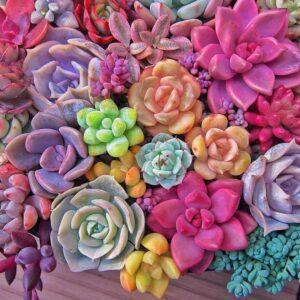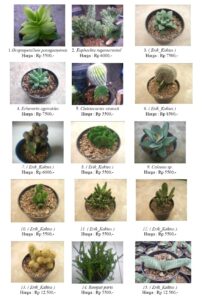When one imagines the beauty of deserts, the image often includes the striking silhouette of cacti against a fiery sunset. Among these resilient plants, certain species stand out not only for their unique forms but also for their captivating blossoms that adorn them like crowns. Cacti with flowers on top exemplify nature’s art, showcasing a fascinating evolution of adaptation and commitment to survival.
This article explores the remarkable world of flowering cacti, delving into their various species, the magnificence of their blossoms, and the ideal conditions for nurturing these unique plants.
Before embarking on this journey, it is essential to address a common concern: how can one ensure these flowering cacti thrive in a home environment? Understanding their specific needs is crucial for any plant enthusiast or potential buyer.
Understanding Flowering Cacti: An Intriguing Overview
The flowering cactus, or cacti that bloom, represents a dynamic range of species including but not limited to Echinopsis, Mammillaria, and Gymnocalycium. These plants originate primarily from arid regions, where conditions demand resilience and adaptability. The flowers that emerge from these hardy structures can vary vastly in color, size, and shape, often creating a stunning contrast against their prickly exteriors.
Cacti are unique in their adaptations to conserve water, which allows them to thrive in environments that would typically be inhospitable to most plant forms. With thick, fleshy stems that store moisture, these plants can withstand prolonged periods of drought. However, the arrival of flowers signals a pivotal moment in their life cycle, as these blooms are often seasonal and ephemeral. For gardeners and collectors, witnessing a cactus flower is akin to observing a miracle of nature.
The Resplendent Blooms: A Colorful Display of Nature’s Artistry
One of the most enchanting aspects of flowering cacti is the diversity of their blossoms. Some species exhibit large, showy flowers that can measure up to 12 inches in diameter, while others produce smaller, more delicate blooms. Colors range from vibrant yellows and oranges to soft pinks and whites, appealing to various aesthetic preferences.
Many flowering cacti bloom only once a year, typically in the spring or summer, and the duration of their display can range from a day to several weeks. As a result, cultivating these plants often requires a significant investment of time and care to ensure that one is present to witness the blooms. Understanding the blooming cycle of a specific cactus species is vital, as it aids in proper care and anticipation of their floral splendor.
Flowering cacti also boast interesting pollination behaviors. Many cacti are nocturnal bloomers, opening up their flowers in the evening to attract nocturnal pollinators such as bats and moths. Others rely on bees and birds during the day. This relationship showcases a fascinating interdependency between cacti and their pollinators, contributing further to the intricate web of life in arid ecosystems.
Caring for Your Flowering Cacti: Key Considerations for Enthusiasts
For those who wish to cultivate their own flowering cacti, understanding their particular needs is essential. Here are some fundamental considerations regarding care and maintenance:
Light Requirements: Most flowering cacti thrive in bright, direct sunlight. A sunny window or an outdoor location where they can soak up ample light is ideal. However, be cautious, as intense afternoon sun can scorch their delicate blooms.
Soil Choice: Cacti require well-draining soil. A mixture specifically formulated for succulents is beneficial, or one can create a custom blend with gritty sand, perlite, and standard potting soil.
Watering Practices: Despite their drought-resistant nature, flowering cacti still need water, especially when they are in bloom. Generally, they thrive on a watering schedule that allows the soil to dry out completely between sessions. Adjustments may be needed based on seasonal changes.
Fertilization: Applying fertilizer during the growing season, typically from spring through early fall, can support the growth of healthy flowers. A diluted, balanced fertilizer specifically for cacti will provide necessary nutrients without overwhelming the plant.
Temperature and Humidity: Ideally, flowering cacti prefer warm, dry conditions. Minimum temperatures should above 50°F (10°C), and low humidity levels are preferable as most species are adapted to arid environments.
Potential buyers should meticulously evaluate their environment and capabilities before investing in flowering cacti. They are not just plants but are configurations of resilience and beauty requiring dedicated care to flourish.
Floriferous Cacti: A Worthwhile Investment
Investing in flowering cacti is an endeavor that promises not only aesthetic pleasure but also an appreciation for nature’s complexity. These plants serve as a vivid reminder of resilience and adaptation, standing proud in their environment, blooming in celebration of survival.
As awareness around sustainable gardening practices grows, flowering cacti represent a responsible choice for those wanting to introduce unique flora into their lives. Choosing a flowering cactus, nurturing it, and ultimately witnessing its blossoms is an enriching experience, providing joy during each bloom and all year round.
In conclusion, the pursuit of growing cacti with flowers on top invites one into an intricate dance of patience, understanding, and devotion. By addressing specific care needs and understanding the marvel of their blooms, anyone can embark on an exciting journey into the world of cacti.




Leave a Comment